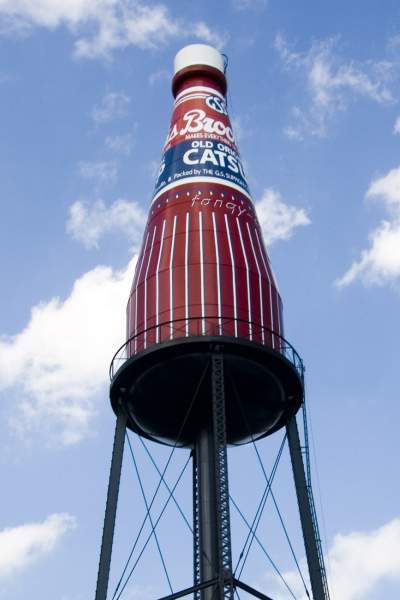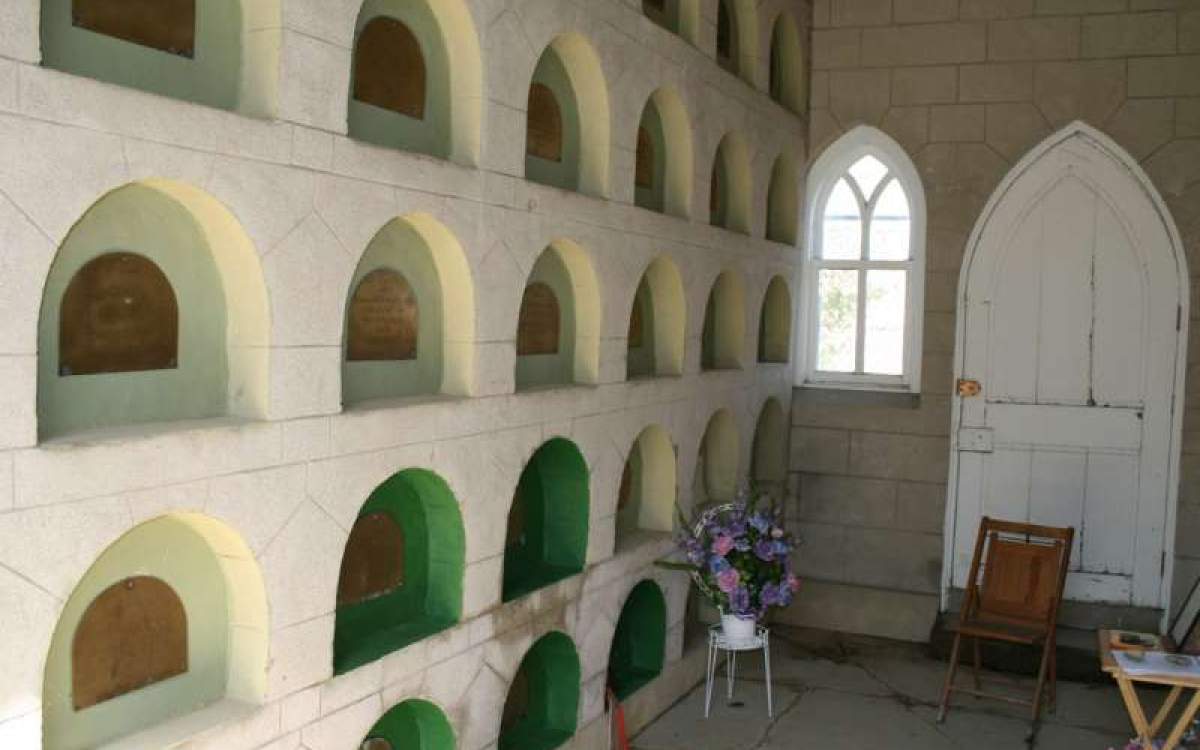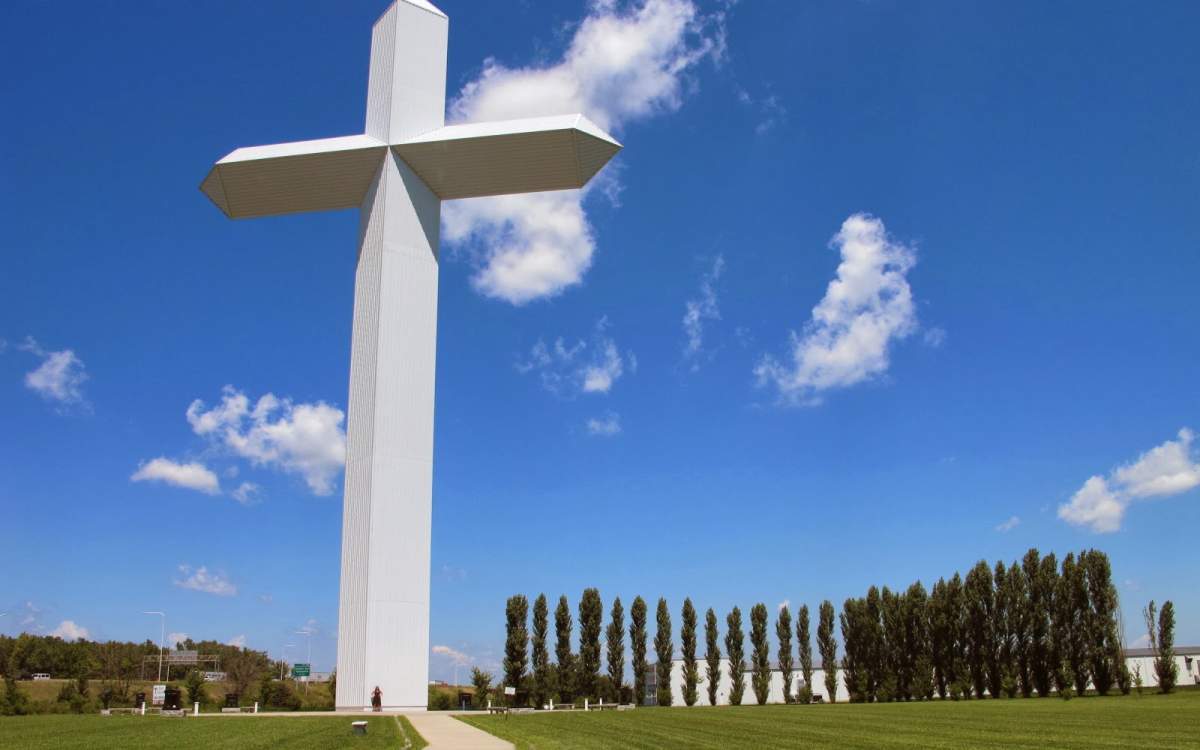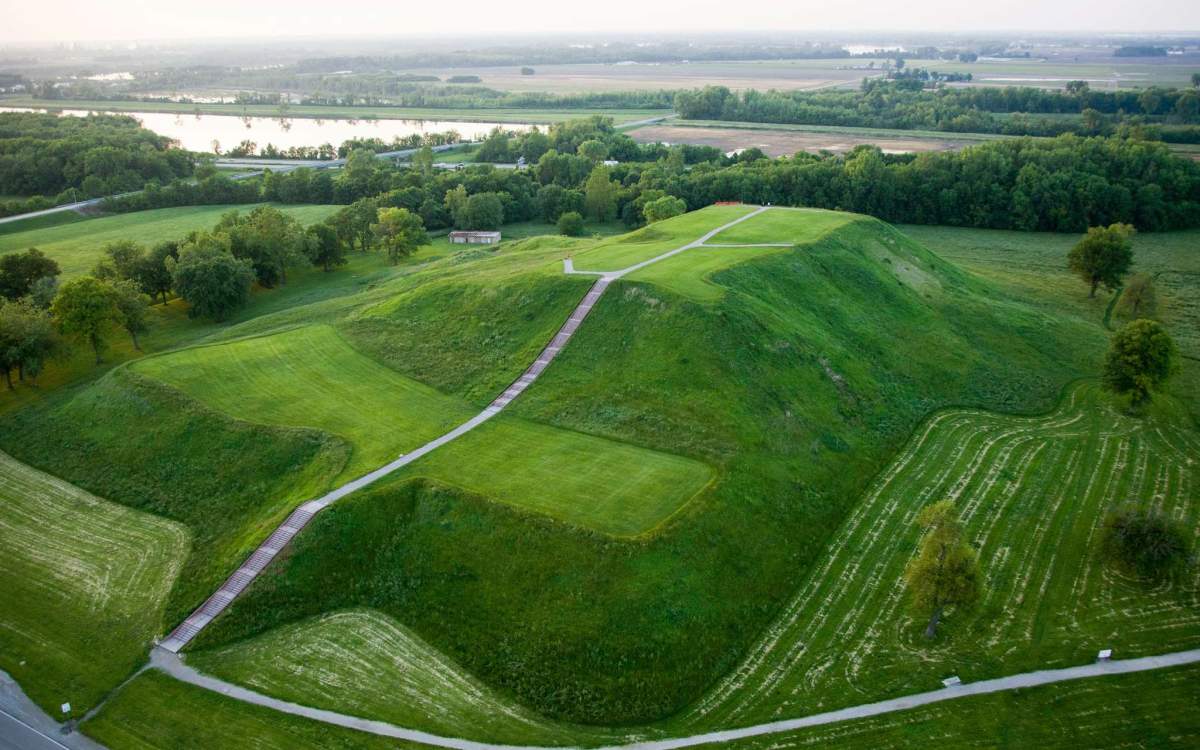The Historic National Road in Illinois
Take a road trip along the first federally funded road in U.S. history, with plenty of historic sites to see along the way.
Jun 12, 2018 • Arts, Culture & History

By Amber Holst of Concierge Preferred
Originally winding from Cumberland, Maryland to Vandalia, Illinois, the Historic National Road opened Illinois to settlement and was the first federally-funded road in U.S. history. Today, the Historic National Road in Illinois stretches 164 miles from Marshall to East St. Louis and is mirrored by U.S. Route 40 and Interstate 70.
Along the way, visitors can see where Lincoln’s political career began, marvel at a giant ketchup bottle, and enjoy the food, festivals, and fun that make the Historic National Road a relaxed journey through Americana. Here’s a look at our top 10 things to see along the way (from East to West).

Marshall
Let’s get this short road trip started! First stop? Marshall, Illinois, home to the oldest house in the state of Illinois. Start your journey at the welcome center in historic Harlan Hall, a former opera house. Fun fact? The building’s livery area still has the original trough for watering the horses that pulled wagons and stagecoaches westward.
Casey
Built at the turn of the 20th Century, this park once hosted some of the best horse racing in central Illinois. The annual Bluegrass Festival and other festivals and activities are held here. In Casey, check out its collection of giant things such as chimes, knitting needles, crochet hook, and golf tee. Read more about these at Big Things in a Small Town.

Greenup
Completed in 2000, the beautiful Jackson Truss covered timber bridge replaced an early 20th century metal and concrete bridge. A young Abraham Lincoln, and his father Tom, purportedly helped build the original bridge which is named for William Greenup, who was in charge of the road’s construction in Illinois.

Teutopolis
Teutopolis became a home to Franciscan Friars in 1858. Today, the Teutopolis Monastery Museum, housed within the monastery, features religious artifacts from the Friars depicting the pioneer era.

Effingham
The Cross Foundation completed a 198-foot cross. The site is intended to serve as a beacon of hope to the 50,000 travelers passing each day. It is the largest cross structure anywhere. You can stop in Effingham for the old courthouse turned transportation and military museum and the 198-foot cross, known as the Cross at the Crossroads.

Vandalia
The town was Illinois’ second capital from 1819 to 1839 and home to the state’s oldest surviving Illinois capitol building, the Vandalia State House. Here Stephen Douglas served in the House of Representatives, as did Abraham Lincoln from 1834 to 1839. Lincoln made his first protest against slavery here and was also instrumental in getting the capital moved to Springfield. The interpretive center in Vandalia features plenty of National Road history, including a log from the original road, a Conestoga wagon replica and a harness set with bells. Early travelers used bells to warn of their approach and often gave a bell to someone who helped along the way. If they arrived at their destination with all bells intact, it meant they had encountered no problems. It was a matter of pride to say, “I’ll be there with bells on,” according to National Road historians. Vandalia also hosts one of 12 Madonna of the Trail statues, erected to honor pioneer mothers. It is on the grounds of the old State House, where legislators including Abraham Lincoln met for three years before moving the capital to Springfield. If you’re looking for a little less political history and a bit more quirk, make sure to visit the Kaskaskia fire breathing dragon. The giant metal sculpture is firmly planted in the middle of a field and will even breath fire if you feed him a special coin.
Greenville
Continuing west brings you to one of the oldest towns on the National Road. Founded in 1815, Greenville has a history steeped in religion, ties to the Underground Railroad, a thriving college and a heritage farm. The Richard W. Bock Sculpture Museum (open by appointment) highlights the work of its eponymous sculptor, and the oddly-awesome DeMoulin Museum of Fraternal Initiation Devices which showcases everything from marching band uniforms to spanking machines and even a guillotine.

Pocahontas
What’s in a name? Pocahontas was originally known as Hickory Grove and then Amity. You never know, native country singer Gretchen Wilson could be right around the corner. They also have an adorable sign, so this is more of a leg-stretching stop for that social-media-gold-worthy Americana shot.
Highland & Troy
Originally a stagecoach stop built in 1840, today the brick structure houses a museum with historical items from the business community, city government, and social organizations. Just south of Highland, settled in 1831 by Swiss immigrants, is the Latzer Estate, home of the founder of PET Milk (evaporated milk). As you pass through Troy, you can think of the late U.S. Senator Paul Simon, who published a newspaper there before entering politics.

Collinsville
Cahokia Mounds is the largest pre-historic site north of Mexico. At its height, the city, arranged around open plazas, had approximately 20,000 residents. A total of 120 mounds were built. See first-hand where Mississippi Indians were living 1,000 years ago, building mounds and an astronomical calendar of 48 cedar posts arranged in a 410-foot circle with a post in the center. From this center post they marked the equinoxes and summer and winter solstices. Forty posts of this antique Woodhenge have been replaced in their original positions. Nearby are Monk's Mound (largest earthworks of the ancient world) and an excellent interpretive center. Don’t miss the Brooks Catsup Bottle Water Tower, trademarked "The World's Largest Catsup Bottle," a water tower just south of Collinsville whose claim to fame is being the largest catsup bottle in the world. As a prime example of mid-20th-century novelty architecture, it is listed on the National Register of Historic Places.
Share your Moments
#EnjoyIllinois





